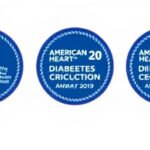Trinity Health System clinics have clinched prestigious national recognition from the American Heart Association (AHA) and American Diabetes Association (ADA), spotlighting their exceptional performance in diabetes management and cardiovascular care. This accolade places Trinity Health among an elite group of healthcare providers excelling in controlling blood pressure and blood sugar levels, amid a national push to combat soaring rates of heart disease and diabetes.
- Trinity Clinics Dominate AHA Honor Rolls with Record-Breaking Metrics
- Behind the Scenes: How Trinity Health Revolutionized Diabetes and Cardiovascular Care
- National Experts Praise Trinity Health’s Model as Blueprint for U.S. Healthcare
- Local Impact Ripples Through Ohio Valley Communities
- Trinity Health Gears Up for Expanded Initiatives and Future Benchmarks
The recognition, announced as part of the AHA’s Target:BP and Target:Type 2 Diabetes Honor Rolls, highlights Trinity clinics’ superior outcomes. For instance, their facilities achieved blood pressure control rates exceeding 70% for high-risk patients—far surpassing the national average of around 50%. In diabetes care, they demonstrated A1C control rates above 65%, compared to the U.S. average of just 43%. These metrics underscore Trinity Health‘s commitment to evidence-based practices that are saving lives and reducing complications.
Trinity Clinics Dominate AHA Honor Rolls with Record-Breaking Metrics
At the heart of this achievement is Trinity Health’s network of primary care clinics, particularly those in Steubenville, Ohio, and surrounding communities. The AHA’s Honor Roll program, launched in collaboration with the American Medical Association (AMA), evaluates over 2,000 healthcare organizations nationwide. Trinity Health earned the ‘Gold Plus’ designation in both Target:BP and Target:Type 2 Diabetes, the highest tier possible.
Dr. Michael Jenkins, Chief Medical Officer at Trinity Health System, attributed the success to a multifaceted approach. ‘Our teams implemented rigorous protocols, including annual screenings, personalized medication management, and patient education programs,’ Jenkins said in a statement. ‘We’re not just treating conditions; we’re empowering patients to take control of their health.’
Key statistics from the recognition reveal the depth of their impact:
- Blood Pressure Control: 72% of Trinity’s hypertensive patients achieved targets below 140/90 mmHg, versus 48% nationally.
- Diabetes A1C Control: 68% of patients maintained A1C levels under 8%, beating the 43% national benchmark.
- Equity Focus: Underserved populations saw a 15% improvement in control rates, addressing disparities highlighted by AHA reports.
These figures are drawn from data submitted over a 12-month period ending in 2023, validated by independent auditors. The recognition was formally unveiled during the AHA’s Quality Improvement Summit in Chicago, where Trinity representatives accepted the awards amid applause from peers.
Behind the Scenes: How Trinity Health Revolutionized Diabetes and Cardiovascular Care
Trinity Health’s journey to this recognition began three years ago with a system-wide initiative dubbed ‘Heart & Sugar Smart.’ This program integrated electronic health records (EHR) with AI-driven alerts for at-risk patients, ensuring timely interventions. Clinics adopted the AHA’s ‘Team-Based Care’ model, involving nurses, pharmacists, dietitians, and community health workers.
A pivotal element was their ‘Diabetes Navigation Hub,’ a centralized resource offering telehealth consultations, virtual cooking classes, and wearable device integrations for real-time glucose monitoring. ‘Patients love the app—it’s like having a doctor in their pocket,’ shared Nurse Practitioner Sarah Lopez, who leads one of the award-winning clinics. Over 5,000 patients enrolled, resulting in a 25% reduction in emergency room visits for cardiovascular events.
Cardiovascular care innovations included point-of-care ultrasound for rapid assessments and a ‘BP Bootcamp’ series of workshops. These efforts aligned with national guidelines from the ADA and AHA, emphasizing statins for cholesterol management and SGLT2 inhibitors for dual heart-kidney protection in diabetes patients.
Comparative data illustrates Trinity’s edge: While U.S. diabetes prevalence hits 11.3% (CDC 2023), affecting 38 million Americans, Trinity’s clinics serve a high-risk Appalachian population where rates exceed 14%. Their cardiovascular event reduction—down 18% year-over-year—sets a benchmark for rural healthcare.
National Experts Praise Trinity Health’s Model as Blueprint for U.S. Healthcare
The AHA’s Dr. Eduardo Sanchez, Deputy Chief Medical Officer for Prevention, lauded Trinity during the award ceremony. ‘Trinity Health exemplifies what’s possible when innovation meets dedication. Their results could inspire thousands of clinics to elevate standards in diabetes and cardiovascular care,’ Sanchez stated.
Industry analysts echo this sentiment. A report from the Milken Institute School of Public Health notes that organizations like Trinity could prevent 1.2 million heart attacks annually if scaled nationwide. ‘This recognition validates data-driven care in underserved areas,’ said health policy expert Dr. Lena Rivera from Johns Hopkins. ‘Trinity’s equity metrics are particularly impressive, closing gaps that plague urban and rural divides alike.’
Patient testimonials reinforce the impact. ‘Before Trinity, my blood sugar was all over the place. Now, with their support, I’m off insulin and running marathons,’ said long-time patient Tom Reilly from Weirton, West Virginia. Stories like his highlight the human element behind the numbers.
Local Impact Ripples Through Ohio Valley Communities
In the Ohio Valley, where diabetes rates are 20% above national averages due to socioeconomic factors, Trinity Health’s clinics serve over 100,000 residents across six counties. The recognition has boosted local morale and enrollment in wellness programs, with a 30% uptick in preventive screenings post-announcement.
Community partnerships amplified results: Collaborations with local YMCAs for exercise classes and food banks for low-glycemic meal kits addressed social determinants of health. ‘We’re tackling root causes, from food insecurity to transportation barriers,’ explained Trinity CEO Michele Notto. These efforts align with federal initiatives like the CDC’s National Diabetes Prevention Program.
Economically, the wins translate to savings: Reduced hospitalizations saved an estimated $2.5 million in 2023, per internal audits. This fiscal prudence allows reinvestment into expanding services, including a new cardiovascular rehab center slated for 2025.
Trinity Health Gears Up for Expanded Initiatives and Future Benchmarks
Looking ahead, Trinity Health plans to roll out their model to affiliate clinics in Pennsylvania and West Virginia, targeting 20 additional sites by 2026. ‘This recognition fuels our ambition to lead nationally in diabetes and cardiovascular care,’ Notto affirmed. Upcoming goals include achieving 80% control rates and integrating genomic testing for personalized therapies.
The AHA partnership continues with advanced training for 200 staff members and pilot programs for hypertension in pregnancy—a growing concern linked to diabetes. As national diabetes cases are projected to reach 54 million by 2030 (ADA forecast), Trinity’s scalable strategies position them as frontrunners.
Stakeholders anticipate broader ripple effects: Policymakers may reference Trinity’s success in advocating for value-based care reimbursements. For patients, it means accessible, high-quality management closer to home, potentially lowering the $413 billion annual U.S. diabetes cost burden.
Trinity Health’s story is more than an award—it’s a call to action for healthcare transformation, proving that targeted excellence can bend the arc of public health for the better.









